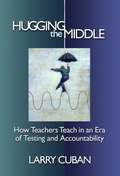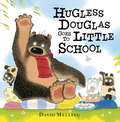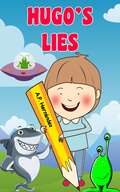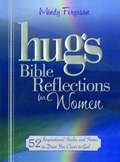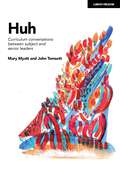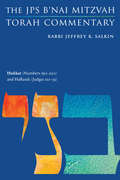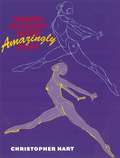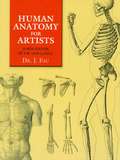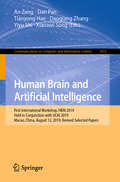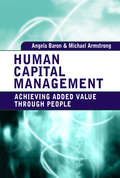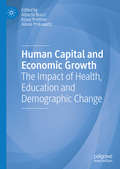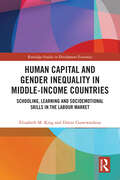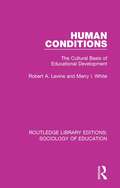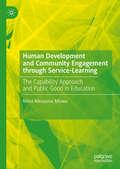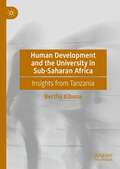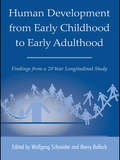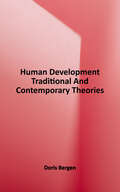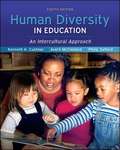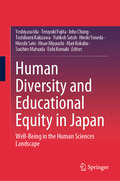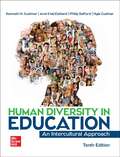- Table View
- List View
Hugging The Middle: How Teachers Teach in an Era of Testing and Accountability
by Larry CubanFOR DECADES, educational researchers and policymakers have looked upon medical education, university research, and clinical practice as the gold standard for teacher educators, scholars, and teachers to copy.
Hugless Douglas Goes to Little School (Hugless Douglas #6)
by David MellingA charmingly funny Hugless Douglas story. Perfect for reassuring little ones going to school or nursery for the first time.It's a big day for Hugless Douglas. He's starting Little School. Douglas is a bit nervous at first... but soon he's having lots of fun playing with his new friends and joining in with all the fun activities!"A new Hugless Douglas book is always a cause for celebration." Daily Mail"Hugless Douglas fits right in with the well-loved classics." GuardianThe much-loved Hugless Douglas books have sold over 1.6 million copies. Combining brilliantly imaginative illustrations with an endearing sense of what it's like to be a small child learning about the world.
Hugo’s Lies: Children's book for 6 to 7 year olds
by A. P. HernándezHugo is seven years old and a liar. He loves to stretch the truth! Whenever he can, he tells a fib. It's super fun! Or, at least, so he thinks ...
Hugs Bible Reflections for Women
by Mindy FergusonThe latest in the bestselling Hugs series features inspiring Bible verses paired with heartwarming stories written by ordinary women who have stepped out in faith and experienced God's faithfulness to them.Hugs Bible Reflections for Women is a moving collection of stories told by women who are not afraid to bare their souls and share their hard-earned life wisdom. Full of inspirational quotes, scripture, insightful tips, and biblical principles, this heartwarming book will strengthen the faith of those special women in your life.Building on its own bestselling success, the Hugs series focuses on Christian women's growing interest in finding useful tools that will encourage them to refresh their outlook on life. Readers are sure to relate to these personal stories and the thought-provoking reflection questions that follow each story. So whether you are searching for the "just right" present for a friend, or want a nurturing read that will help you through those rough patches in life, Hugs Bible Reflections for Women is sure to deepen any woman's relationship with God.
Huh: Curriculum conversations between subject and senior leaders
by John Tomsett Mary MyattSchools need to have purchase on the curriculum: why they teach the subjects beyond preparation for examinations, what they are intending to achieve with the curriculum, how well it is planned and enacted in classrooms and how they know whether it’s doing what it’s supposed to. Fundamental to this understanding are the conversations between subject leaders and their line managers. However, there is sometimes a mismatch between the subject specialisms of senior leaders and those they line manage. If I don’t know the terrain and the importance of a particular subject, how can I talk intelligently with colleagues who are specialists? This book sets out to offer some tentative answers to these questions. Each of the national curriculum subjects is discussed with a subject leader and provides an insight into what they view as the importance of the subject, how they go about ensuring that knowledge, understanding and skills are developed over time, how they talk about the quality of the schemes in their departments and what they would welcome from senior leaders by way of support. We have chosen this way of opening up the potentially difficult terrain of expertise on one side and relative lack of expertise on the other, by providing these case studies. They are suggested as prompts rather than the last word. Informed debate is, after all, the fuel of curriculum development. And why Huh? Well, 'Huh?' may be John's first response when he walks into a Year 8 German class but, in fact, we chose 'Huh' as the title of our book as he is the Egyptian god of endlessness. As Claire Hill so eloquently comments in her chapter, “Curriculum development is an ongoing process; it’s not going to be finished, ever.” And we believe that 'Huh' captures a healthy and expansive way of considering curriculum conversations.
Huh: Curriculum conversations between subject and senior leaders
by John Tomsett Mary MyattSchools need to have purchase on the curriculum: why they teach the subjects beyond preparation for examinations, what they are intending to achieve with the curriculum, how well it is planned and enacted in classrooms and how they know whether it’s doing what it’s supposed to. Fundamental to this understanding are the conversations between subject leaders and their line managers. However, there is sometimes a mismatch between the subject specialisms of senior leaders and those they line manage. If I don’t know the terrain and the importance of a particular subject, how can I talk intelligently with colleagues who are specialists? This book sets out to offer some tentative answers to these questions. Each of the national curriculum subjects is discussed with a subject leader and provides an insight into what they view as the importance of the subject, how they go about ensuring that knowledge, understanding and skills are developed over time, how they talk about the quality of the schemes in their departments and what they would welcome from senior leaders by way of support. We have chosen this way of opening up the potentially difficult terrain of expertise on one side and relative lack of expertise on the other, by providing these case studies. They are suggested as prompts rather than the last word. Informed debate is, after all, the fuel of curriculum development. And why Huh? Well, 'Huh?' may be John's first response when he walks into a Year 8 German class but, in fact, we chose 'Huh' as the title of our book as he is the Egyptian god of endlessness. As Claire Hill so eloquently comments in her chapter, “Curriculum development is an ongoing process; it’s not going to be finished, ever.” And we believe that 'Huh' captures a healthy and expansive way of considering curriculum conversations.
Hukkat: The JPS B'nai Mitzvah Torah Commentary (JPS Study Bible)
by Rabbi Jeffrey K. SalkinHukkat (Numbers 19:1-22:1) and Haftarah (Judges 11:1-3): The JPS B’nai Mitzvah Torah Commentary shows teens in their own language how Torah addresses the issues in their world. The conversational tone is inviting and dignified, concise and substantial, direct and informative. Each pamphlet includes a general introduction, two model divrei Torah on the weekly Torah portion, and one model davar Torah on the weekly Haftarah portion. Jewish learning—for young people and adults—will never be the same. The complete set of weekly portions is available in Rabbi Jeffrey K. Salkin’s book The JPS B’nai Mitzvah Torah Commentary (JPS, 2017).
Human Anatomy Made Amazingly Easy (Made Amazingly Easy Series)
by Christopher HartFrom head to toe, the human form, in all its complexities, is visually simplified to such a degree in this remarkable workbook that even complete beginners will soon be able to draw accurate, well-proportioned faces and figures every time they try. Avoiding complex charts of muscles and bones that are more helpful to doctors than to artists, this book's refreshing approach teaches anatomy from a cartoonist/illustrator's point of view. For example, there are many large and small muscles in the neck, all rendered in great detail in most anatomy books, but here, master teacher Christopher Hart shows only the four that are visible and need to be drawn. His clear instruction helps readers to visualize and portray shifting body weight in a pose without the need of a model, and instead of showing a mass of facial muscles and bones, he translates them into the simple planes an artist needs to draw a range of expressive faces.
Human Anatomy for Art Students
by Ralph Thompson Sgt. Sir Alfred FrippA staple of art instruction, this book is the most concise and accessible guide to accurately depicting the human body. Its illustrations and cross-sections offer examples of human skeletal and muscular substructures and details of individual body parts, helping students achieve the most precise visual re-creation of human form and motion.Subjects include the skeleton, the coverings and regions of the body, the upper and lower extremities, movements of the joints, the trunk, and the head and neck. Additional topics encompass expression and gesture, differences of size and proportion in the sexes, and growth, development, and measurements. More than 130 detailed figures appear throughout the text, in addition to thirty-one plates.
Human Anatomy for Artists: A New Edition of the 1849 Classic with CD-ROM
by J. FauThis magnificent art book re-creates an extremely rare 1849 guide to anatomy, originally compiled for "artists, painters, and sculptors." Unavailable for more than 150 years, this classic work features 30 plates with 105 highly detailed and finely executed black-and-white lithographs. These realistic and meticulously accurate drawings illustrate form as well as function, offering artists a mastery of anatomy through careful, knowledgeable articulation of the muscles and bones beneath the skin. Each image appears with an identifying caption, and this new edition offers the convenience of a CD-ROM that includes every illustration from the book. In addition to its value as a resource for practicing artists, this beautiful browsing book will captivate anyone who has an interest in the human body.
Human Brain and Artificial Intelligence: First International Workshop, HBAI 2019, Held in Conjunction with IJCAI 2019, Macao, China, August 12, 2019, Revised Selected Papers (Communications in Computer and Information Science #1072)
by Daoqiang Zhang Tianyong Hao An Zeng Dan Pan Yiyu Shi Xiaowei SongThis book constitutes the refereed proceedings of the workshop held in conjunction with the 28th International Conference on Artificial Intelligence, IJCAI 2019, held in Macao, China, in August 2019: the First International Workshop on Human Brain and Artificial Intelligence, HBAI 2019. The 24 full papers presented were carefully reviewed and selected from 62 submissions. The papers are organized according to the following topical headings: computational brain science and its applications; brain-inspired artificial intelligence and its applications.
Human Capital Management: Achieving Added Value Through People
by Michael Armstrong Angela BaronHuman Capital Management (HCM) has recently been described as a high-level strategic issue that seeks to analyze, measure and evaluate how people policies and practices create value. Put simply, HCM is about creating and demonstrating the value that great people and great people management add to an organization.This unique book describes how HCM provides a bridge between human resource management and business strategy. It also demonstrates how organizations can use the concepts of human resource management and the processes involved to enhance the value they obtain from people while continuing to meet their aspirations and needs.Baron and Armstrong explain how to achieve these objectives using various approaches including describing the concept of HCM and how the process works, discussing its application in numerous areas within an organization and examining the role of HR in HCM and the future of the concept.It also contains a toolkit which organizations can use to develop their own HCM policies and practices.
Human Capital and Economic Growth: The Impact of Health, Education and Demographic Change
by Alberto Bucci Klaus Prettner Alexia PrskawetzThis edited collection explores the links between human capital (both in the form of health and in the form of education), demographic change, and economic growth. Using empirical as well as theoretical perspectives, the authors investigate several important issues in the context of human capital, namely population ageing, inequality, public policy, and long-term economic development. Ultimately, they demonstrate that the accumulation of human capital is of crucial importance to long-run economic growth.
Human Capital and Gender Inequality in Middle-Income Countries: Schooling, Learning and Socioemotional Skills in the Labour Market (Routledge Studies in Development Economics)
by Elizabeth M. King Dileni GunewardenaThe role of cognitive and socioemotional skills alongside education in determining people’s success in the labour market has been the topic of a growing body of research—but previous studies have mostly missed middle-income countries and the developing world because measures of those skills and data on employment and earnings on large enough samples of adults have typically not been available. Using comparable survey data on these schooling, skills, and labour market outcomes from 13 developing and emerging economies worldwide, this book revisits human capital and gender inequality models. It presents new estimates of the returns to different levels of schooling as well as the cognitive and socioemotional skills for women and men. It examines whether those returns are due to levels of human capital or to structural bias in labour markets, and how these two factors work across the earnings spectrum. The book examines the existence of “glass ceilings” and “sticky floors” for women using this expanded measure of human capital. Further, by analyzing a group of countries of wide-ranging levels of economic development and sociopolitical contexts, the book reveals patterns and insights into how context mediates the relationship between skills and gender gaps in labour market outcomes. This book will be of interest to scholars of human capital, gender inequality in the labour market and development economics, as well as, gender and development policy makers.
Human Capitalism: How Economic Growth Has Made Us Smarter--and More Unequal
by Brink LindseyWhy the rich are getting smarter while the poor are being left behindWhat explains the growing class divide between the well educated and everybody else? Noted author Brink Lindsey, a senior scholar at the Kauffman Foundation, argues that it's because economic expansion is creating an increasingly complex world in which only a minority with the right knowledge and skills—the right "human capital"—reap the majority of the economic rewards. The complexity of today's economy is not only making these lucky elites richer—it is also making them smarter. As the economy makes ever-greater demands on their minds, the successful are making ever-greater investments in education and other ways of increasing their human capital, expanding their cognitive skills and leading them to still higher levels of success. But unfortunately, even as the rich are securely riding this virtuous cycle, the poor are trapped in a vicious one, as a lack of human capital leads to family breakdown, unemployment, dysfunction, and further erosion of knowledge and skills. In this brief, clear, and forthright eBook original, Lindsey shows how economic growth is creating unprecedented levels of human capital—and suggests how the huge benefits of this development can be spread beyond those who are already enjoying its rewards.
Human Conditions: The Cultural Basis of Educational Developments (Routledge Library Editions: Sociology of Education #32)
by Merry I. White Robert A LevineFirst published in 1986, this book proposes and illustrates a new approach to the comparative analysis of educational policy, based on anthropological and historical inquiry. It reviews the transitions of Western countries, Japan, and the People’s Republic of China and in doing so investigates cultural ideas of human potential and how they inform social and economic goals of education. An analysis of the problems and emerging patterns in developing countries reveals how and why the meanings of life for the majority of their populations were still influenced by agrarian cultural models, even after the introduction of new educational and occupational careers. In place of universalistic economic models and homogenous modernization strategies, the authors propose that culture-specific meanings of education are determined by each country’s particular transition from its agrarian past to its socio-economic conditions at the time. They argue that change in educational development has been as varied in ends, means and significance outcomes as the cultures in which it has occurred and point to the need for a deeper understanding of cultural contexts in which policy choices and development plans are made.
Human Data Interaction, Disadvantage and Skills in the Community: Enabling Cross-Sector Environments for Postdigital Inclusion (Postdigital Science and Education)
by Sarah Hayes Matthew Johnson Stuart Connor Michael JoplingThe book provides a dynamic, cross-sectional, multidisciplinary perspective and dialogue to illuminate the challenges humans face in their interactions with data in their individual postdigital contexts in local communities. It offers unique insights from real cases, collaborations, and projects to extend existing academic theories and frameworks, applied to human data interactions, disadvantage, and digital skills. The book takes the novel approach of establishing co-authorship between cross-sector practitioners from the wider community (such as local authorities, councils, policy makers, small businesses, charities, education and skills providers, and other stakeholders) with international academics and researchers who write about humans, digital skills, and data. This develops an enabling cross-sector environment throughout the book that not only furthers broader understandings concerning data, disadvantage and digital skills in postdigital society, but also shares a template to support others who may wish to adopt this approach to co-authorship and knowledge exchange.The book revisits the Human Data Interaction (HDI) framework (Mortier, Haddadi, Henderson, McAuley, and Crowcroft 2014) through many diverse cross-sectoral perspectives. These are co-authored under the HDI framework’s key tenets of: agency, legibility, negotiability and resistance. These tenets form the main sections of the book, with chapters examining these concepts through both interdisciplinary academic literature and cross-sector dialogue with individuals and agencies from the wider community who work with diverse and often disadvantaged groups.
Human Development and Capabilities: Re-imagining the university of the twenty-first century (Education, Poverty And International Development Ser.)
by Melanie Walker Alejandra BoniGlobally, universities are the subject of public debate and disagreement about their private benefits or public good, and the key policy vehicle for driving human capital development for competitive knowledge economies. Yet what is increasingly lost in the disagreements about who should pay for university education is a more expansive imaginary which risks being lost in reductionist contemporary education policy. This is compounded by the influences on practices of students as consumers, of a university education as a private benefit and not a public good, of human capital outcomes over other graduate qualities, and of unfettered markets in education. Policy reductionism comes from a narrow vision of the activities, products, and objectives of the University and a blinkered vision of what is a knowledge society. Human Development and Capabilities, therefore, imaginatively applies a theoretical framework to universities as institutions and social practices from human development and the capability approach, attempting to show how universities might advance equalities rather than necessarily widen them, and how they can contribute to a sustainable and democratic society. Picking through the capability approach for human development, in relation to Universities, this book highlights and explores three main ideas: theoretical insights to advance thinking about human development and higher education Policy implications for the responsibilities and potential contributions of universities in a period of significant global change Operationalising a New Imaginary This fresh take on the work and purpose of the University is essential reading for anyone interested in university education, capability approach and human development; particularly postgraduates, University policy makers, researchers and academics in the field of higher education.
Human Development and Community Engagement through Service-Learning: The Capability Approach and Public Good in Education
by Ntimi Nikusuma MtawaThis book establishes community engagement and service-learning as pathways to advancing human development and common good. Using the human development and capability approach as normative frameworks, with South Africa as a frame of reference, the author investigates the theoretical contributions and ultimate benefits of university-community partnerships. In doing so, this book demonstrates that three interrelated capabilities – affiliation, common good professionals and local citizenship – are developed through community engagement and service-learning. Subsequently, the notion of transformative change through community engagement and service-learning is illuminated, particularly when operating within the context of power differentials, inequality and extreme poverty. This book will be of interest and value to students and scholars of service-learning, and its implications for partnerships between universities and external communities.
Human Development and the University in Sub-Saharan Africa: Insights from Tanzania
by Bertha KibonaThis book utilises a human development and capability approach to examine the role of higher education in the context of Tanzania. The author considers decolonisation debates as they relate to African concerns in order to make a case for systems design and implementation implications for decolonising higher education institutions. The book will be of interest to students, scholars and policymakers in the field of higher education.
Human Development from Early Childhood to Early Adulthood: Findings from a 20 Year Longitudinal Study
by Wolfgang SchneiderData generated from longitudinal studies allow researchers to better understand how context and experience interact with stable characteristics of the developing person over time. This book summarizes a landmark longitudinal study of 200 children, from the ages of 3 to 23. The Munich Longitudinal Study on the Ontogenesis of Individual Competencies (LOGIC) examined the development of individual differences over time and whether it is possible to predict later competencies from earlier ones. Offering a snapshot of theory and data on personality, social, motor, moral, and cognitive development, the contributors help us understand which individual differences can and cannot be altered through schooling and other experiences and how differences seen in the earliest stages are later reflected in adulthood. The results provide valuable insight into the strengths and limitations of early prediction of individual differences. This is the second volume to review the wealth of data generated by the study. The first volume (Weinert and Schneider, 1999) traced development from ages 3 to 12. This volume continues the story, integrating these early findings with the results from adolescence and young adulthood. Each of the chapters provides an overview of current research and addresses how the data help us understand the presence and developmental effects of individual differences. Among the findings are results on: The relative stability of cognitive competencies The long term effects of shyness and aggression The relation between moral understanding and action, and The role of education in the development or maintenance of performance differences. Intended for researchers and advanced students in developmental, educational, personality, social, and cognitive psychology, this book will also appeal to educators, especially the chapters that focus on literacy development, educational context, scientific reasoning and mathematical reasoning.
Human Development: Traditional and Contemporary Theories
by Doris BergenFor courses in human development, theories of development and development over the lifespan. Throughout years of teaching various courses in psychology, Doris Bergen struggled with a familiar problem in Human Development classes: the texts available to her did not meet the needs of the types of students in her classes. In teaching students who were primarily working towards degrees in professional practice, rather than those focusing on advanced degrees in psychology, the current texts did not present theoretical work in a way that helped her students translate the concepts into their careers. Here, Doris Bergen has authored a text that does just that. By making the theoretical issues relevant and accessible to students going into professional practice, enabling them to apply theory to case examples, and helping them see which theories are focused primarily on specific developmental domains, this text will give students the edge they need as they move forward in their working lives.
Human Diversity In Education
by Kenneth Cushner Averil McClelland Philip SaffordThis eighth edition of Human Diversity in Education: An Intercultural Approach continues to focus on the preparation of teachers and other human-service providers who not only can teach and interact more effectively with the wide diversity of students they are certain to encounter, but are also able to transmit this knowledge and skill to the individuals in their charge. <p><p> The book continues to provide a broad treatment of the various forms of diversity common in today's schools, including nationality, ethnicity, race, religion, gender, social class, language acquisition and use, sexual orientation, health concerns, and disability. We also maintain its research-based approach, with an increased cross-cultural and intercultural emphasis. <p> We continue to stress that it is both at the level of the individual teacher as well as the organizational structure of the school where significant change must occur with regard to how diversity is understood and accommodated.
Human Diversity and Educational Equity in Japan: Well-Being in the Human Sciences Landscape
by Hiroshi Sato Yoshiyasu Ida Teruyuki Fujita Inho Chung Toshibumi Kakizawa Yuhkoh Satoh Hiroki Yoneda Hisae Miyauchi Mari Kokubu Soichiro Matsuda Eishi KomakiThis book examines how Japan, transforming itself into a society that celebrates its rich diversity, is now providing support to its children and youth. It presents a multilayered picture of support provided to, or planned for, young people from the perspective of Human Sciences. It overturns stereotypical impressions of education and youth services in Japan. Part One 'Diversity and Inclusion in School Curriculum' depicts the latest trends, ranging from the reality of 'Tokkatsu' to the transformation of extracurricular activities, and the state of educational support for children with special needs. Part Two 'Inclusive Society and Lifelong Learning' takes a broader view of learning and focuses on the latest practices for building an inclusive society. Part Three 'Support and Assessment in School and Society' includes analytical papers centered on the evaluation of programs aimed at establishing people's well-being, and well-being itself. This book offers multiple perspectives and serves as a valuable literature source for researchers.
Human Diversity in Education: An Intercultural Approach
by Kenneth Cushner Averil McClelland Philip L. Safford Hyla CushnerThis new edition of Human Diversity in Education provides coverage of current events and relevant legislation is incorporated throughout the book to ensure students are educated on the most critical issues teachers are faced with in today's classroom. <p><p>It prepares new teachers for the certainty of change as well as the challenge of new thinking that is required for young people to take their place as responsible, reflective, and active citizens in an increasingly interdependent society. <p><p>Case Studies in each chapter present students with situations they may encounter in the workplace, and accompanying questions ask them to determine how they would react when faced with the same situation.
